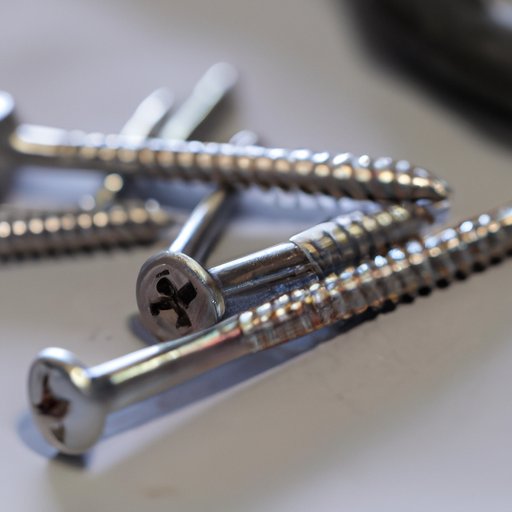
Introduction
Dealing with screws that have lost their heads can be a frustrating experience for anyone, whether you’re a DIY enthusiast or a professional craftsman. This issue often arises when the screwdriver’s head or the drill bit slips off or wears out, leaving a protruding screw shaft that seems almost impossible to remove. Fortunately, there are several tricks you can use to rescue the situation, and this article will explore five of the most effective methods for removing a screw with no head.
Using Pliers
If the screw shaft is protruding from the surface, you might be able to grip it with a pair of pliers and turn it out. This method is easiest and works best for small screws with a relatively substantial grip. To use pliers, select a pair with a strong grip and position them at the base of the screw’s shaft. Apply a firm and steady grip and twist the pliers in a counter-clockwise direction to loosen the screw. However, be careful not to push too hard or you risk breaking the screw’s shaft, which will make the process even more challenging.
Using a Rubber Band
Another popular trick is to use a rubber band to get a grip on the screw. This method works best for screws with some shaft above the surface. Place the rubber band over the screw’s head so that it covers the whole area. Then grip the rubber band with a pair of pliers and turn it in a counter-clockwise motion. The rubber band provides a better grip, which helps to loosen the screw without stripping it. However, this method may not work for screws with a shallow and narrow grip.
Using a Screw Extractor Set
Screw extractor sets are specialized tools that can remove screws with no head. This method involves drilling a small hole into the center of the screw’s shaft and then using a screw extractor bit to grip the screw and turn it out. Screw extractor sets come in different sizes, and you should select one that matches the screw’s diameter. This method requires precision, and you may need to exert some force to loosen the screw. However, this is a more advanced method that requires the purchase of a specialized tool.
Using a Hammer and Chisel
If you don’t have access to specialized tools, you can use a hammer and chisel to remove the screw. First, place the screwdriver’s flathead on the screw and tap the end with a hammer to create a small indentation. Then, using the chisel’s edge, create a shallow groove in the screw’s head. Gently twist the screwdriver, so the screw turns out. Although this method can work, it is time-consuming, and it risks damaging the surrounding surface.
Using a Dremel Tool
A Dremel tool is a versatile rotary tool that can be used to create small grooves in the screw’s head. This method involves attaching a small grinding wheel attachment to the Dremel and grinding a small indent into the center of the screw’s head. Then, use a flathead screwdriver to turn the screw. Be careful with the Dremel tool as it may produce sparks or debris. Also, this method is best suited for small screws and may require a steady hand.
Conclusion
Removing a screw with no head may seem like an impossible task, but with the right tools and techniques, it can be done. We have discussed five effective methods for removing such screws, including using pliers or a rubber band, a screw extractor set, a hammer and chisel, and a Dremel tool. Each of these methods has its pros and cons, but your choice will depend on the type of screw and the tools you have available. To avoid stripped screws in the future, make sure you use the right size and type of screwdrivers and drills.




